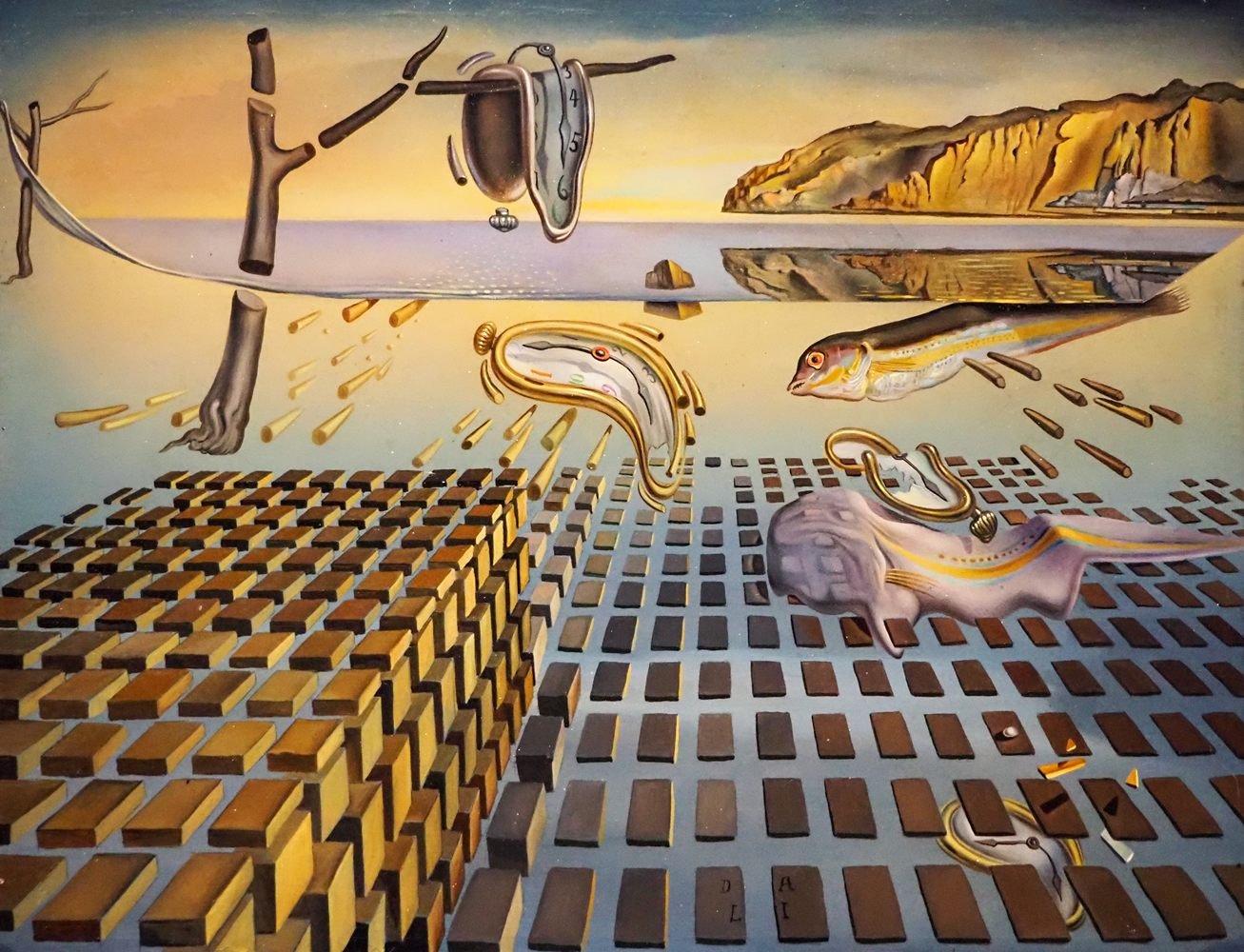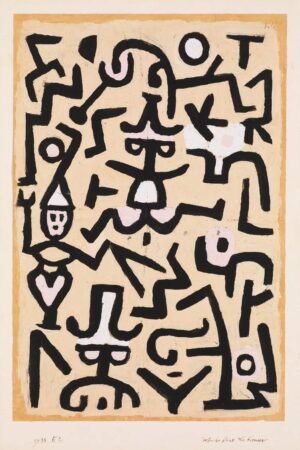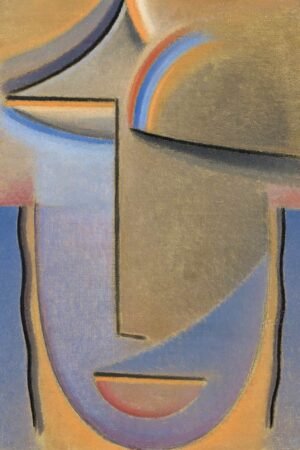Salvador Dalí’s The Disintegration of the Persistence of Memory is regarded as a continuation or reinterpretation of his most famous painting, The Persistence of Memory (1931). Created between 1952 and 1954, this painting reflects the transformations in Dalí’s art and the evolution of his worldview. Here is a detailed analysis of the work:
Background
The Meaning and Impact of World War II
The painting was created during a period when Dalí’s interest in the subatomic world intensified after the detonation of the atomic bomb. During this time, Dalí was influenced by both scientific developments and religious beliefs.
The Theme of Quantum Physics and Fragmentation:
Dalí began integrating modern physics, which he admired for its exploration of the independence and energy of subatomic particles, into his art. This painting can be considered a symbol of matter’s divisibility and the building blocks of the universe.
Analysis of Visual Elements
Melting Clocks:
- The Concept of Universal Time: As in the original painting, the clocks here are melting and losing their form, deepening their symbolic meaning. However, this time, the clocks appear to disintegrate into atomic fragments, reflecting Salvador Dali‘s perception that time is merely an abstraction and has a more complex structure in the atomic realm.
- Fragmentation: The edges of the clocks break into liquid droplets and tiny spheres, symbolizing the disintegration of matter and the chaos of the microcosm.
Water and Ripples:
- The solid ground in the original work has now transformed into water. Water symbolizes the transience of time and space, as well as the constant motion of energy.
- The ripples and reflections create a sense of both calmness and perpetual change.
Void and Fragmentation:
- The landscape has largely disintegrated. The Catalan landscape from the original painting has been replaced by a more abstract, water-filled world.
- Objects Reduced to Cores: The solid objects in the original painting have disintegrated here or been reduced to building blocks.
Color Palette:
- The warm tones of the original painting have been replaced by cooler hues, creating a more scientific and contemplative atmosphere with blues and greens.
- These colors reflect both the theme of water and the depths of the subconscious.
Flying Fish and Structures:
- Newly added figures introduce a sense of absurdity and dreamlike quality. The fish symbolize the constant change in life, while the floating structures emphasize the “lightness” of matter.
Thematic Analysis
The Fragility of Memory and Time
Like the original painting, this work expresses the non-linear nature of time and the perception-based essence of memory and time. However, in this piece, time and memory appear even more fragile, as if on the verge of dissolution, highlighting their underlying meaning.
Dalí Between Science and Religion:
In this work, Dalí is influenced by both scientific theories and religious metaphors. While the disintegrating structures are grounded in scientific principles, they also carry a religious dimension, reflecting creation and the unknowability of the universe.
Modern World and Transience:
Dalí’s concerns about the modern world are evident in this work. The destructive power of the atomic bomb reinforces the sense that time and space are slipping out of human control.
This painting marks a significant turning point in Dalí’s artistic evolution. It seamlessly blends the abstract concepts of surrealism with scientific exploration. Both aesthetically and intellectually profound, it examines the interconnected themes of science, religion, time, and memory.
Discover Our Latest Art Prints
Explore the latest additions to our curated art collection, designed to inspire every room.
-

God Speed Art Print by Edmund Blair Leighton
Price range: $23.00 through $209.00 This product has multiple variants. The options may be chosen on the product page -

Paul Klee Comedians Handbill Abstract Art Print
Price range: $23.00 through $209.00 This product has multiple variants. The options may be chosen on the product page -

Abstract Head of woman, Evening Print Alexej von Jawlensky
Price range: $23.00 through $209.00 This product has multiple variants. The options may be chosen on the product page -

White Swan Floating on Dark Water Wall Art Print
Price range: $23.00 through $209.00 This product has multiple variants. The options may be chosen on the product page -

Black and White Sunflower Field Wall Art Print
Price range: $23.00 through $209.00 This product has multiple variants. The options may be chosen on the product page -

Tiger in a Pool Wall Art Print
Price range: $23.00 through $209.00 This product has multiple variants. The options may be chosen on the product page







